The Audubon Observer, March 2020
|
|
||||
VOLUNTEERS NEEDED TO HELP NESTING SHOREBIRDS Urgent request from Audubon Florida's Northeast Florida Policy Associate Chris Farrell:
This event will take place during the day on March 4, 2020 at Little Talbot Island State Park. Additional dates for this volunteer opportunity include March 16th, March 18th, and March 19th." Please contact Chris Farrell at chris.farrell@audubon.org for more info and to RSVP. SPOTLIGHT SPECIES: BURROWING OWL This month we’re beginning an occasional series featuring bird species of special interest in Florida. Our Spotlight Species this month is the Burrowing Owl (Athene cunicularia).
They prefer open areas with sparse vegetation such as pastures or fields and are usually seen on the ground or perched on low posts near their burrows. Unlike many owls, they are often active during the day, but prefer to hunt for prey in the early morning or late evening. Insects, small rodents, and amphibians make up most of their diet. Burrowing Owl pairs are usually monogamous and typically produce one clutch of eggs each year, with an average of 3-4 offspring successfully fledged. The typical breeding season for the Florida Burrowing Owl is February 15 to July 10, though owls can breed earlier or later.
Burrowing Owl populations have declined significantly in the last century. It’s difficult to get an exact figure, but population decline estimates of 25-50% have been noted. Probable causes contributing to the decline include displacement due to development and commercial agriculture, predation by domestic animals, harrassment by humans, and vehicle strikes. As a result, Burrowing Owls are considered by the U.S. Fish and Wildlife Service to be a Bird of Conservation Concern at the national level. In Florida, the Burrowing Owl is classified as State Threatened by the Florida Fish and Wildlife Conservation Commission. This means that taking, possessing, or selling burrowing owls, their nests (i.e., burrows), or eggs is prohibited without a permit.
You probably won’t see any Burrowing Owls here in northeast Florida, but if you are in the southwest part of the state, you may want to consider a visit to Cape Coral or Marco Island to see these cool little owls. Check out Cape Coral's "Burrowing Owl Rules of Engagement" before you go! --Carol Bailey-White, Vice President NATIVE PLANTS FOR BIRDS: PASSIONFLOWER To help you create bird friendly habitat in your landscape, we are sharing a native plant every month that is beneficial to birds and pollinators. This month's plant is: Passionflower Vine (Passiflora Incarnata)
The Cherokee gave this plant the name “Ocoee” which translates to Apricot Place and is the name source for the Ocoee River and the town of Ocoee, Florida. The fruit of the Passionflower vine is also called Maypop because the hollow fruits start ripening in May and can pop loudly when crushed; they taste of apricots, hence the name. It will grow in thickets, near riverbeds, unmowed pastures, roadsides, and thrives in full sunlight. It is the perfect vine to use to cover an ugly or old fence but if you wish, it is also happy in a large pot with well-drained soil. It will attract Cardinals, Grosbeaks, Sparrows, Chickadees, Thrashers, Finches, Orioles, Mockingbirds, and Titmice. For additional information on native plants for birds, check out Audubon's excellent Plants for Birds website: Audubon.org/plantsforbirds. For local sources of native plants, check with the Ixia Chapter of the Florida Native Plant Society. They often have native plants as well as cuttings available at their monthly meetings on the first Tuesday of each month. Check out their Events Calendar for all of their upcoming activities. --Jody Willis, President MORE TIPS TO REDUCE YOUR PLASTIC FOOTPRINT Third in our series from board member Carolyn Antman on how you can help birds and other wildlife by using less plastic in your daily life. "Let’s talk about plastic food bags and plastic wrap. How many sandwiches, leftover produce and other food do you put in a plastic bag? How much do you freeze in a freezer bag? How many times have you covered a bowl with plastic wrap? All of this is single-use plastic that just goes out into the environment when discarded. I have found that using the miscellaneous plastic and glass containers that food comes in preserves food much better and longer than plastic storage bags, even in the freezer. Although I try not to buy too many of these, at least I make use of the plastic containers I have again and again. When I buy meat (never! in Styrofoam) from the butcher, I have them wrap the When I use a bowl that doesn’t have its own top, I cover it with an appropriate Sandwiches should be carried in reusable containers. Children and spouses can be taught to bring these containers home for washing. Sandwiches don’t get squished this way either! As always, demand creates supply. The less we use, the less is produced. Please try some of these tips and tell your friends. Share your successes on our Facebook page!" --Carolyn Antman, Conservation Chair, Duval County UPCOMING EVENTS Our 2019/2020 season continues this month with more exciting activities. Please join us for one (or more) of our upcoming field trips or programs.
Please, always check our website for any last-minute changes before heading out the door, just in case something has come up. We hope to see you soon! Duval Audubon Society, Inc. |
||||

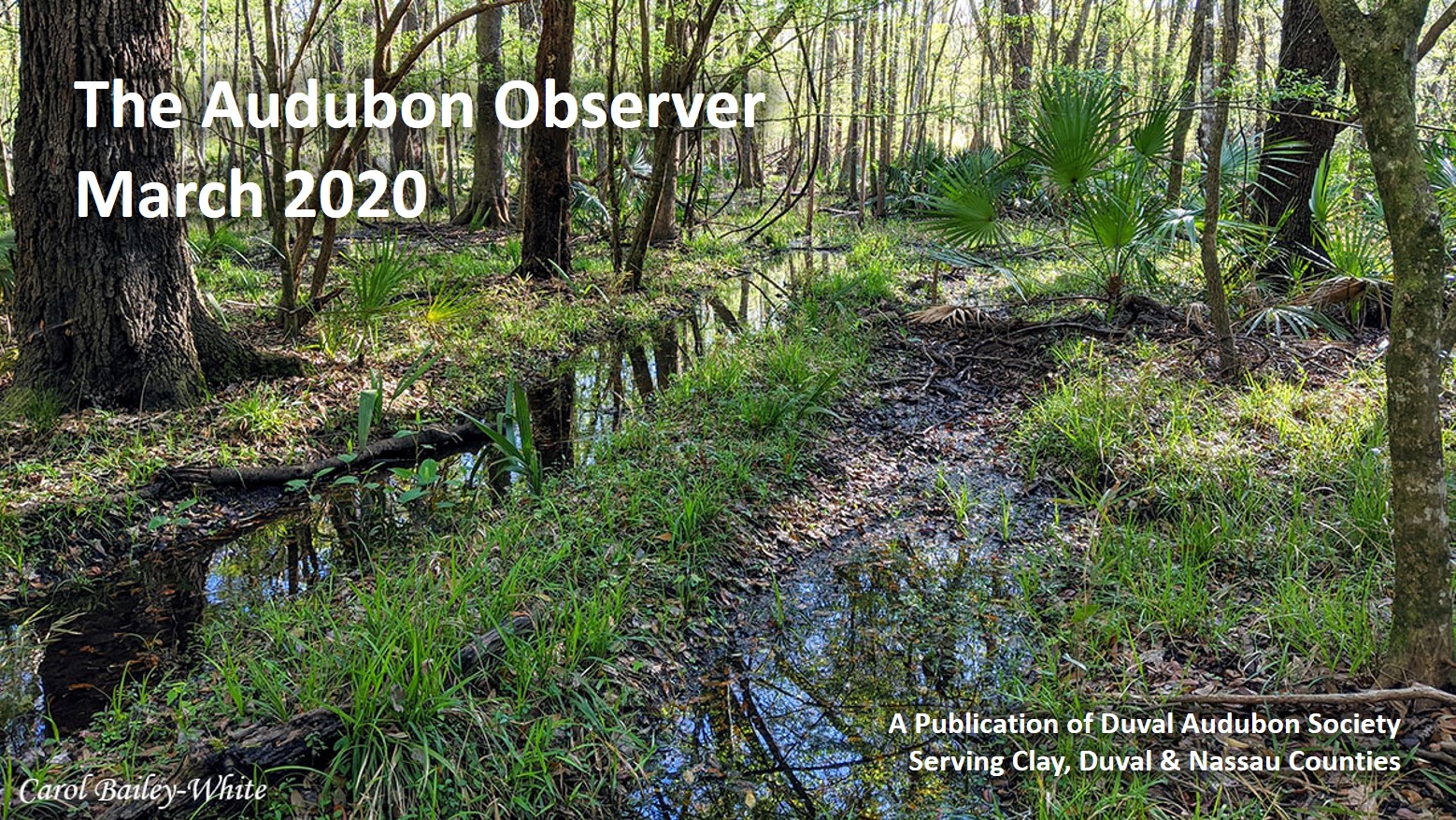
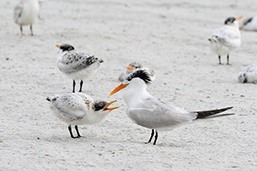 "Last year we had great shorebird nesting success at Little Talbot Island. We need many volunteers to help prepare the site for this upcoming nesting season by "posting" the area to reduce human disturbance. Requires the ability to walk and work on loose beach sand, plus perform some activities including relatively light physical activity, carrying PVC poles, and using posthole diggers.
"Last year we had great shorebird nesting success at Little Talbot Island. We need many volunteers to help prepare the site for this upcoming nesting season by "posting" the area to reduce human disturbance. Requires the ability to walk and work on loose beach sand, plus perform some activities including relatively light physical activity, carrying PVC poles, and using posthole diggers.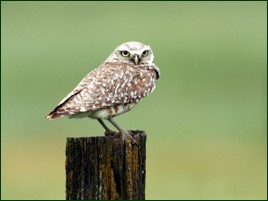 Burrowing Owls are unique among owls of North America because they nest in burrows in the ground, often ones they’ve dug themselves, although they may also occupy burrows made by other species like ground squirrels or gopher tortoises. They are fairly small at 8-9” tall, with long legs and a short tail. They have rounded heads (no ear tufts like some other owl species), big yellow eyes, white eyebrows, sandy brown feathers with lots of white speckling, and lighter coloring underneath.
Burrowing Owls are unique among owls of North America because they nest in burrows in the ground, often ones they’ve dug themselves, although they may also occupy burrows made by other species like ground squirrels or gopher tortoises. They are fairly small at 8-9” tall, with long legs and a short tail. They have rounded heads (no ear tufts like some other owl species), big yellow eyes, white eyebrows, sandy brown feathers with lots of white speckling, and lighter coloring underneath.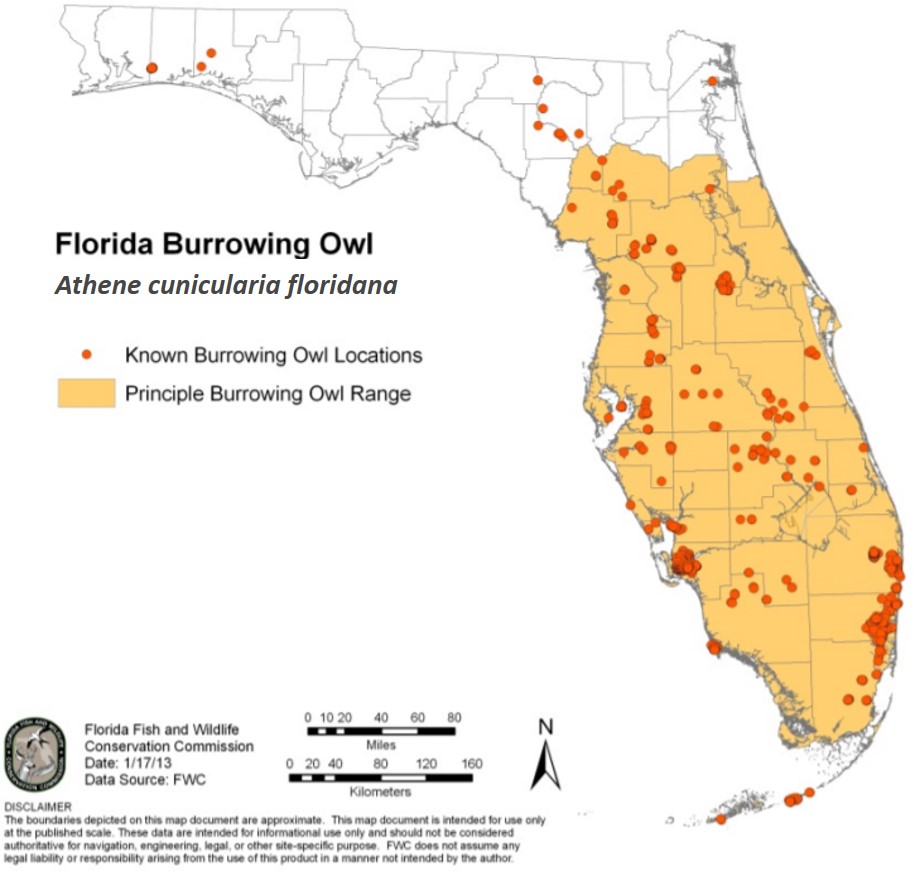 Burrowing Owls are year-round residents in the southwestern United States, central and south Florida and the Bahamas, and some populations migrate between Mexico and the western US. In Florida, Burrowing Owls are concentrated in central and southern parts of the state, but small pockets of Burrowing Owls have historically been recorded in the Panhandle as well as right here in northeast Florida. According to
Burrowing Owls are year-round residents in the southwestern United States, central and south Florida and the Bahamas, and some populations migrate between Mexico and the western US. In Florida, Burrowing Owls are concentrated in central and southern parts of the state, but small pockets of Burrowing Owls have historically been recorded in the Panhandle as well as right here in northeast Florida. According to 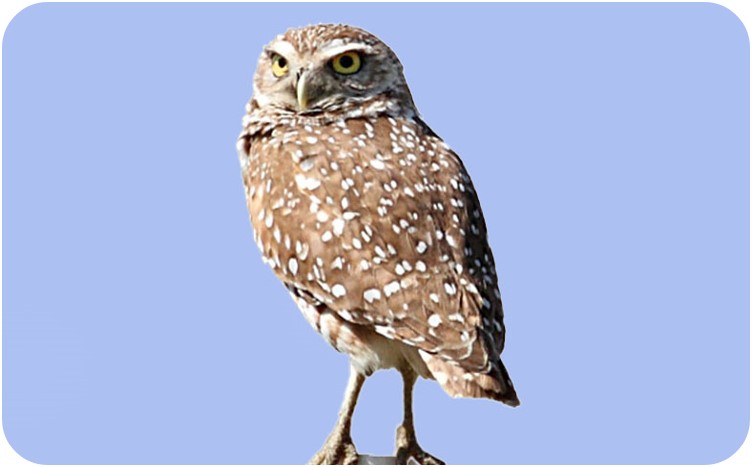 But some Florida communities hosting Burrowing Owl populations have stepped up conservation efforts to save this iconic species.
But some Florida communities hosting Burrowing Owl populations have stepped up conservation efforts to save this iconic species. 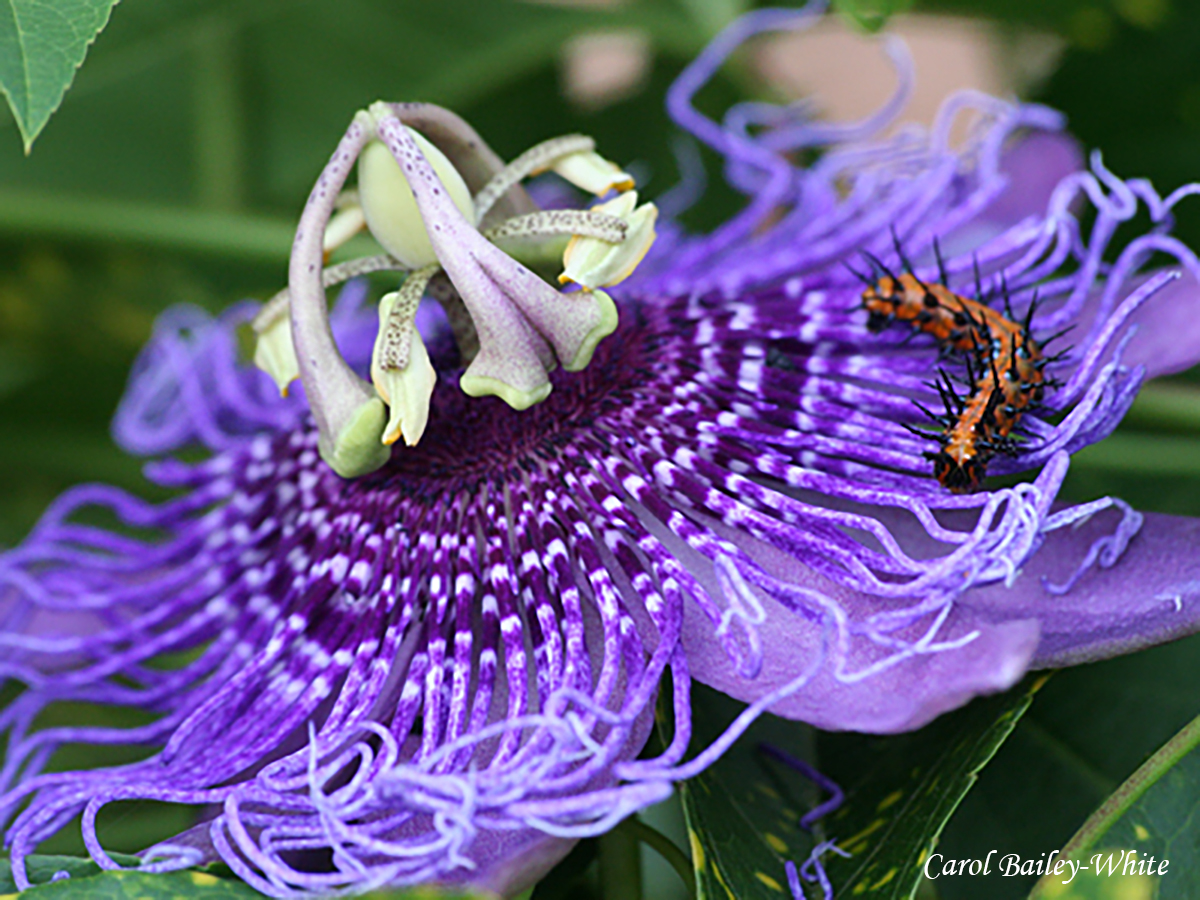 This vine has a native range from Texas to Virginia and south through Florida. It is a high climbing aggressively growing vine with beautiful, showy flowers pollinated by bumblebees and carpenter bees. It is the larval host plant for the following butterflies: Zebra Longwing, Gulf Fritillary, Julia, Varigated Fritillary; also the Plebian Sphinx Moth
This vine has a native range from Texas to Virginia and south through Florida. It is a high climbing aggressively growing vine with beautiful, showy flowers pollinated by bumblebees and carpenter bees. It is the larval host plant for the following butterflies: Zebra Longwing, Gulf Fritillary, Julia, Varigated Fritillary; also the Plebian Sphinx Moth